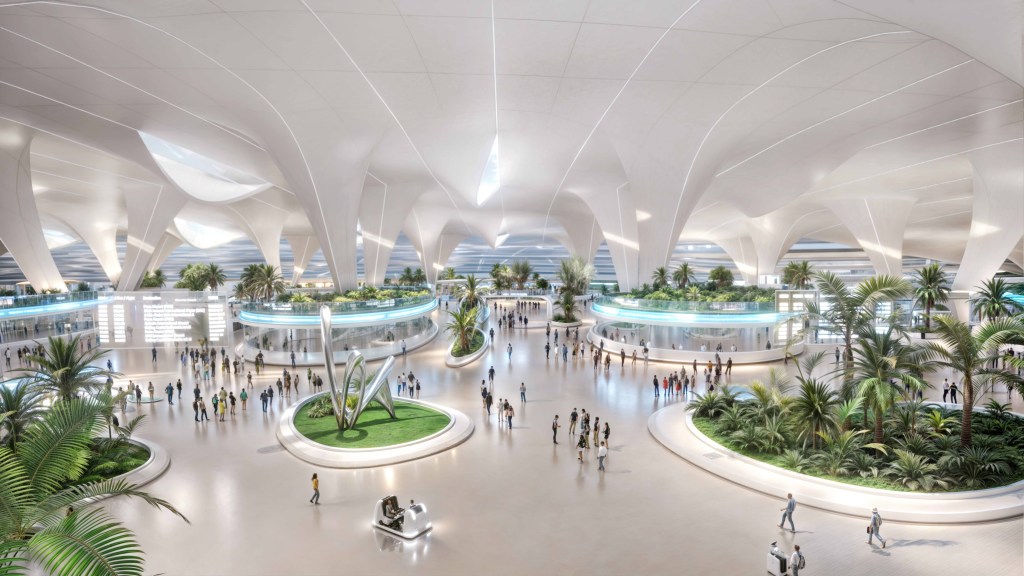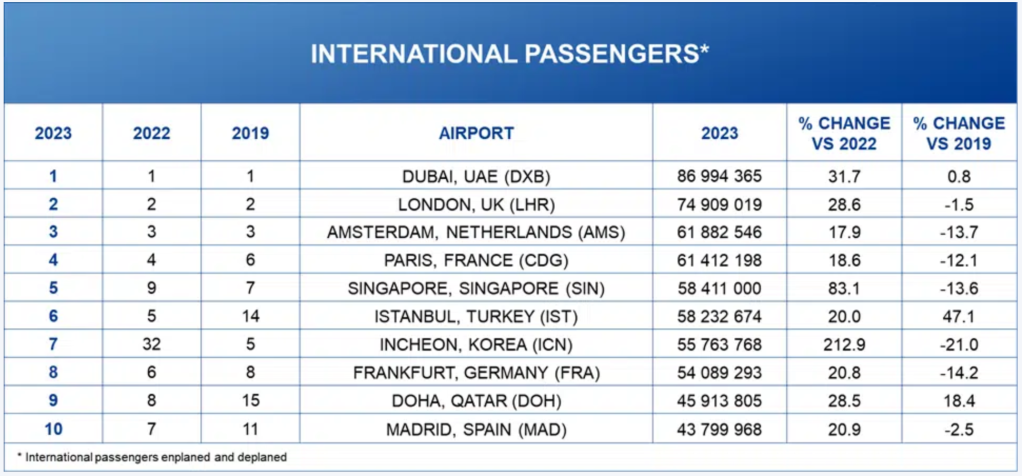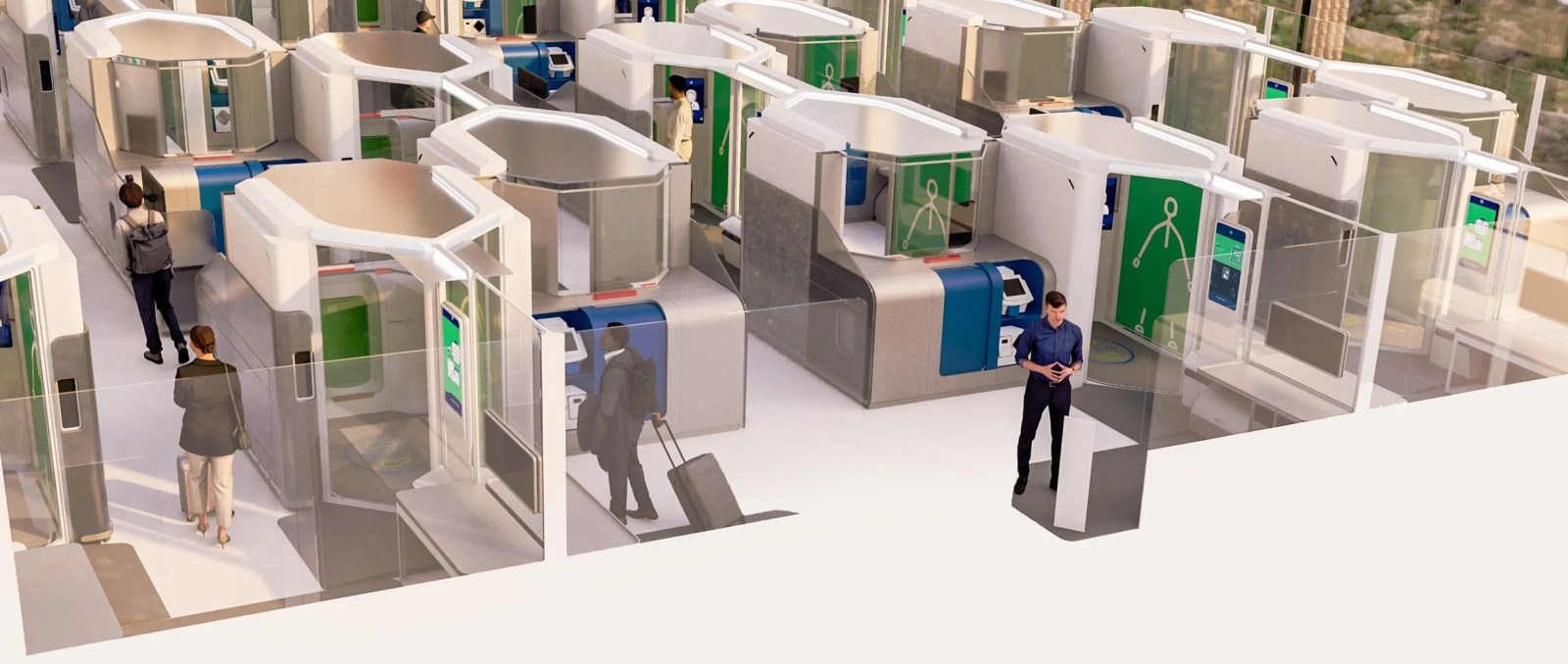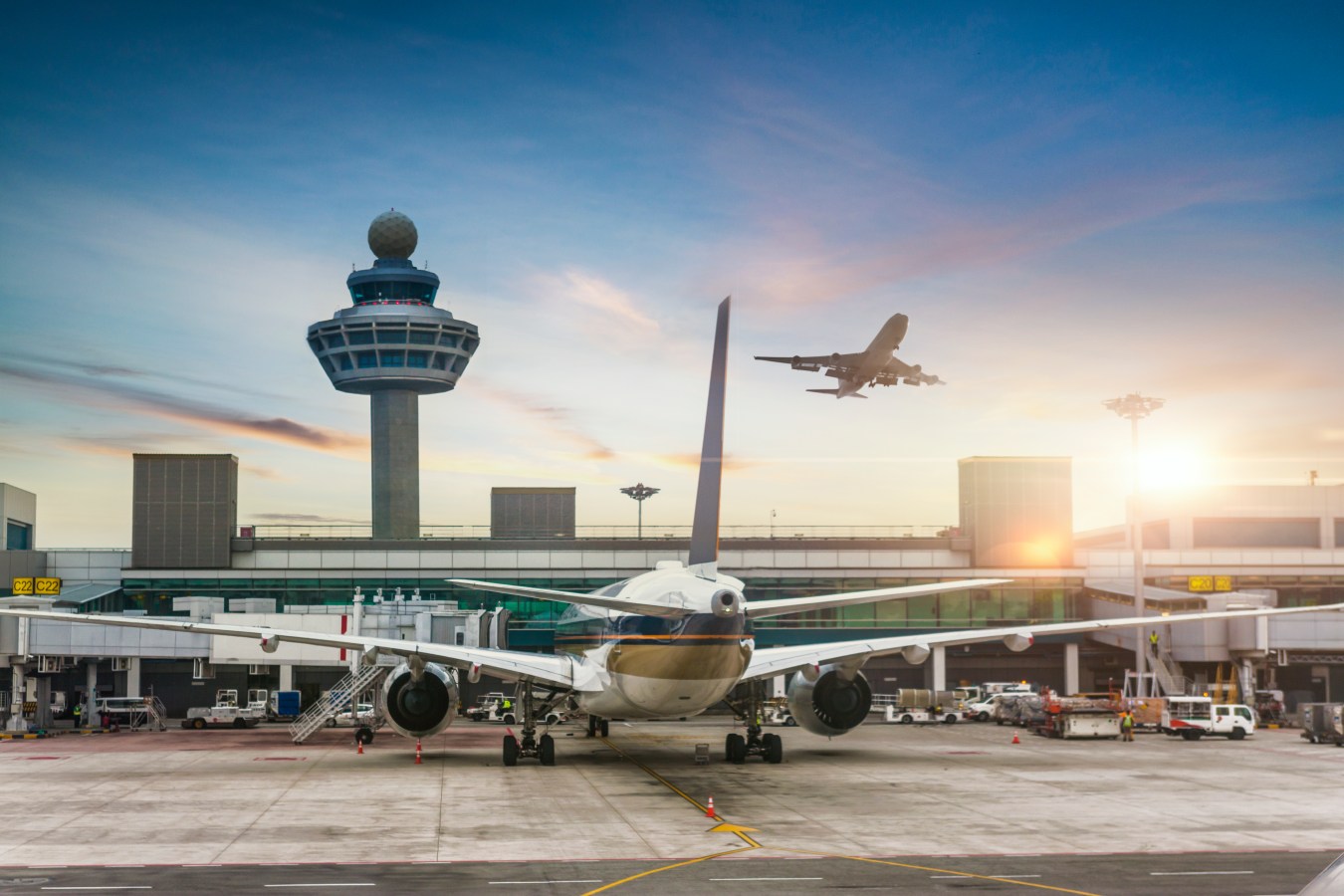The new Al Maktoum International Airport will serve 100 million people in 2035, and has capacity for a staggering 260 million annual passengers in the years beyond.

Dubai International Airport – or DXB, as it is known – was the busiest international airport in the world in 2023, according to Airports Council International. It is the 10th year in a row that DXB has taken the title.
Now Dubai is about to increase the capacity of its international airport even further, doubling the passenger capacity and expanding its footprint to 70 square kilometres. The new, larger airport will be built on the Dubai World Central (DWC) site south of Dubai, and will eventually replace DXB.
Prime Minister and Ruler of Dubai, Sheikh Mohammed bin Rashid Al Maktoum, announced this week that he greenlit the construction of the new international airport that will serve more than 200 million passengers, and 12 million tonnes of cargo, annually.
“Al Maktoum International Airport will enjoy the world’s largest capacity, reaching up to 260 million passengers. It will be five times the size of the current Dubai International Airport, and all operations at Dubai International Airport will be transferred to it in the coming years,” His Highness Sheikh Mohammed said in a statement.
The airport will be a part of an ‘Aviation City’ being constructed at Dubai World Central.
“As we build an entire city around the airport in Dubai South, demand for housing for a million people will follow,” Sheikh Mohammed says. “It will host the world’s leading companies in the logistics and air transport sectors.”
Dubai World Central (DWC)
DWC is a 140 km2 development that is home to Dubai Logistics City, Commercial City, Residential City, Golf City, and Aviation City. A small passenger airport operates on the site currently, along with facilities for transporting cargo.
The new Al Maktoum International Airport will comprise five parallel runways and 400 aircraft gates. Cutting-edge aviation technology will also be incorporated into the airport according to a representative for the project.

The design phase of the new airport is now underway. Construction is expected to be completed in 10 years, and the first phase of the new airport will open by 2035.
Eventually, Al Maktoum International will replace DXB airport, though the existing airport will continue operations for the next decade. No date has been given for the closure of the award-winning DXB that serves as the hub of UAE airline Emirates. DXB is expected to welcome more than 88 million passengers this year alone.
Paul Griffiths, the CEO of Dubai Airports, oversaw the closure of Dubai’s airports during unprecedented rain in the UAE this week. He notes that the airports are now open, and praised airport staff for their dedication during the emergency.
Griffiths says that expanding Dubai World Central Airport into Al Maktoum International Airport requires collaboration between airlines, strategic partners, key stakeholders, and the Dubai government.

“A substantial investment of AED128 billion marks the start of a huge investment of resources by our many stakeholders, in designing and building a state-of-the-art airport that will provide a quick, convenient, and high-quality 21st-century experience for our customers,” says Griffiths.
“The growth of Dubai has always been hand in hand with the growth of the aviation infrastructure and today we see another bold step on that journey.”
Look back on the week that was with hand-picked articles from Australia and around the world. Sign up to the Forbes Australia newsletter here or become a member here.


